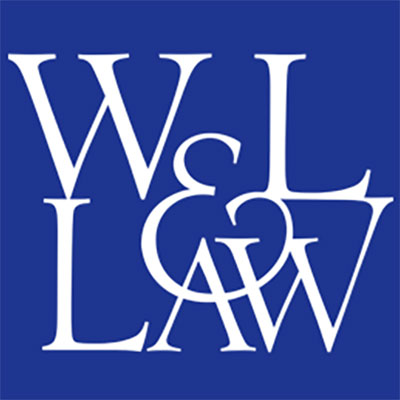On Critical Law Students’ Attitudes Towards Plain Language.
DOI:
https://doi.org/10.56498/1212024614Keywords:
teaching legal English, plain English, plain language, legalese, writing, draftingAbstract
The Plain Language Movement has had a lasting impact on legal drafting. It is now legally
mandated in several countries, including the USA, Canada, Australia, New Zealand, and Finland. In
Poland, civil servants are required to communicate with the public using plain Polish. Over 50 public
administration offices in 2018 and more than 20 banks in 2021 signed the Declaration on the plain
language standard. These institutions are committed to enhancing their employees' competence in
clear communication, creating language standards that facilitate customer understanding, and
promoting sensitivity to diverse needs.
This commitment extends to legal professionals as well. International law firms, public
institutions, legislators, examiners, contract drafters, proofreaders, and legal English teachers are
actively promoting plain language standards. Their collective efforts, regardless of the national
language, culminated in the publication of the ISO Plain Language Standard ISO/FDIS 24495-1 in the
summer of 2023. The benefits of improved communication are far-reaching: readers can quickly
access essential information and use it to meet their needs.
Polish law students, studying legal English, resist embracing the new standards. They view
them as a threat to their profession. These students prefer convoluted legalese, which they believe
helps them earn money by explaining intricacies to clients. Interestingly, plain language was
unfamiliar to them until university, where younger generations are introduced to this concept.
The paper will discuss the results of my research conducted among first-year law students at
Kozminski University. Its aim was to:
investigate students’ attitudes towards plain English,
check their ability to understand legalese as contrasted with plain versions of the same text,
and
understand why they prefer learning and using legalese to plain English.
The paper will also investigate potential strategies for addressing students' reluctance
towards plain English and offer practical recommendations for developing and promoting this
concept among future lawyers.
References
Asprey, M. M. (2010). Plain English for lawyers (4th ed.). Federation Press.
Blasie, M. (2023). Regulating plain language. Wisc. L. Rev., 687. https://ssrn.com/abstract=4318216
Burn-Murdoch, J. (2024, January 26). A new global gender divide is emerging. Financial Times.
https://www.ft.com/content/29fd9b5c-2f35-41bf-9d4c-994db4e12998
CBOS. (2021). Poglądy polityczne młodych Polaków a płeć i miejsce zamieszkania (Report No.
/2021). https://www.cbos.pl/SPISKOM.POL/2021/K_028_21.PDF
Chase, S. (1953). The power of words. Harcourt, Brace & World.
Crump, D. (2002). Against plain English: The case for functional approach to legal document
preparation. Rutgers Law Journal, 33(3), 713-744.
Cutts, M. (1993). The plain English guide. Oxford University Press.
European Commission, Directorate-General for Translation. (2015). How to write clearly (Z. Field,
Illustrator). Publications Office of the European Union.
https://data.europa.eu/doi/10.2782/022405
European Commission. (2014). Clear English. Tips for translators.
https://commission.europa.eu/system/files/2020-06/clear-english-tips-translators_en.pdf
European Commission. (2015). Joint practical guide of the European Parliament, the Council and the
commission for persons involved in the drafting of European Union legislation. https://eurlex.europa.eu/content/techleg/EN-legislative-drafting-guide.pdf
European Commission. (2016, 2023). English style guide. Publications Office of the European Union.
https://commission.europa.eu/system/files/2023-07/styleguide_english_dgt_en.pdf
Evans, A. (2024, January 27). What prevents & what drives gendered ideological polarisation?
https://www.ggd.world/p/what-prevents-and-what-drivesgendered?utm_campaign=post&utm_medium=web
Grasso, A. (2023). Plain English and the EU: Still trying to fight the fog. In C. Williams (Ed.), The
impact of plain language on legal English in the United Kingdom (pp. 139-151).
Kimble, J. (1994–95). Answering the critics of plain language. Scribes J. Legal Writing, 5, 51.
Kimble, J. (2012). Writing for dollars, writing to please: The case for plain language in business,
government, and law. Carolina Academic Press.
Kimble, J. (2016). A curious criticism of plain language. Legal Communication & Rhetoric: JALWD, 13,
https://ssrn.com/abstract=2881592
Kimble, J. (2020). Flimsy claims for legalese and false criticisms of plain Language: A 30-year
collection. Scribes J. Legal Writing, 19, 1. https://ssrn.com/abstract=4016855
The Law Review (1845). Lord Brougham on law reform. The Law Review, 1, 405-415.
Mason, C. (2021). The lawyer’s English language coursebook. Global Legal English.
Mason, C. & Canham, N. (2021). Advanced legal English (2nd ed.). Global Legal English.
Melinkoff, D. (1963). The language of the law. Little, Brown & Co.
Penman, R. (1992). Plain English: Wrong solution to an important problem. Australian Journal of
Communication, 19(3), 1–18.
Pleading in English Act 1362 (1362). 36 Edw. 3 Stat. 1 c. 15.
Rawson, H. (2005). Why do we say that? „Gobbledygook”. American Heritage, 56(2), 20.
Regulation (EU) 2016/679 of the European Parliament and of the Council of 27 April 2016 on the
protection of natural persons with regard to the processing of personal data and on the free
movement of such data, and repealing Directive 95/46/EC (General Data Protection
Regulation) [2016] OJ L 119/1.
Schiess, W. (2003-2004). What plain English really is. Scribes Journal of Legal Writing, 9, 43.
https://ssrn.com/abstract=1329051
Williams, C. (2011). Legal English and plain language: An update. ESP Across Cultures, 8, 139-151.
Williams, C. (2023). The Impact of plain language on legal English in the United Kingdom. Routledge.
Downloads
Published
Issue
Section
License
Copyright (c) 2024 Authors retain copyright and grant the journal right of first publication with the work simultaneously licensed under a Creative Commons Attribution (CC-BY) 4.0 License that allows others to share the work with an acknowledgment of the work’s authorship and initial publication in this journal.

This work is licensed under a Creative Commons Attribution 4.0 International License.













